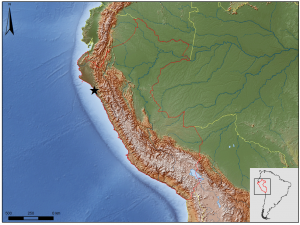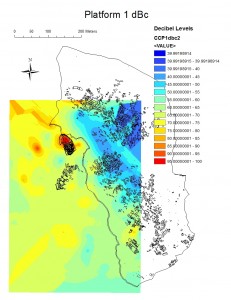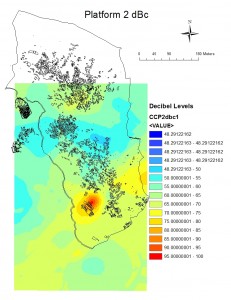Acoustic properties of Moche sites in the Jequetepeque valley, Peru (Dianne Scullin, Columbia)
Earlier this month, I attended the South American Archaeology Seminar, hosted bi-annually at UCL by Dr Bill Sillar. These sessions are an outlet for a broad variety of interests and terrific original research stemming from archaeologists working South America and the Caribbean, yet the overlap with archaeological computing is a surprisingly rare occurrence. A welcome exception to this rule was the doctoral research presented by Dianne Scullin (Columbia) based on her fieldwork and experiences with acoustical modelling in the Jequetepeque valley, northern coastal Peru. With her permission, I present some of the things I took away from her engaging talk.

Dianne’s presentation focused on her investigations into the affordances of Moche corporate architecture for musical performance. The Moche material complex (AD 100 – 900) is notable for being spread and sustained throughout the North Coast of Peru on dynamic ideological and ritual foundations (Bawden 1995). The question of who was permitted to consume novel or attractive forms of material culture or ritual performances is highly relevant for understanding the role such access may have played in the process of inclusion into/exclusion from the Moche fold.
How public performances were experienced by the participants has a direct impact on the meaning and perception of the displays, particularly in settings where inclusion/exclusion may be linked to the emergence of hierarchical or unequal power relations. This point comes into its own with Dianne’s interest in the acoustical properties of monumental buildings and plazas with significant different layouts and locations in the landscape. Should we, as archaeologists, expect that “all buildings are created equal”, or that architectural choices were deliberate and reflect the strategies encoded in Moche ritual? Taking this fully to task, Dianne also found it necessary to examine the different kinds of instruments employed by Moche performers (flutes, ocarinas, drums, etc.) and impact of the effects they produce on the structure of sound around plazas and enclosed courts in the Jequetepeque.

Platform 1, high frequency sound
Using a noise generator and regularly measuring the intensity of sound (in decibels – dB) in points along transects, it was possible to establish a model of how sound travels in several Late Moche architectural settings. Sound, as a spatial phenomenon, is continuous. Like other continuous phenomena, such as temperature, atmospheric pressure or soil chemistry, it is therefore most sensible to conceptualize its variance as a raster grid. It may be useful to know in certain cases that the sound level is X dB in one location, and Y in another, but what about the intervening space? What causes differences in audibility (and hence, degrees of participation?), and what is its effect on the perception of space? Thinking with rasters, rather than the raw sampled points, makes the data amenable to geostatistical techniques which enable inferences about the phenomenon at unsampled locations – in this case kriging.

Platform 1, low frequency sound
The results of performing geostatistical analyses on the sonic data in a GIS are especially intriguing by taking into account different weightings of the pitch of the decibels. High frequency sounds are represented by the dBa maps and low frequencies by the dBc maps. Not only are there differences in within/outside the features, but different types of sound are audible in these locations, generating differences in aural perception. At Cerro Chepén Platform 1, for instance, low frequency sounds (an archaeological correlate would be drums/trumpets) could be heard much further than higher-pitched wind instruments. This is interesting because of the high visibility of Platform 1, increasing the likelihood that outsiders may have been aware of ritual activity occurring within, but unable to take part. Conversely, Platform 2 is much harder to view from the domestic sectors of the site, but projects a much larger sonic footprint, especially in the low frequency model. Despite architectural similarities, these monuments exhibit markedly different sets of affordances for both participants and observers.

Platform 2, high frequency sound
At this point, I leave the interpretation of the significance of these findings to Dianne (and they are only a set of several structures she touched upon). Her method and data do remarkably illustrate the value of putting some strong numbers behind the social theory and phenomenological philosophy introduced to the discipline over the past twenty years.

Platform 2, low frequency sound
Conversely, however, it also showcases the bare necessity for archaeologists to understand what the often-abstracted data we manipulate actually signify in anthropological terms. Framing our enquiries into the material record in terms of affordances and the role of space in structuring sociality resonates with my own research, and I hope this brief entry has provided some insights into a new way of achieving this in archaeological contexts. In the future, I hope to invite Dianne to provide an entry to the ACRG blog which elucidates her methodology in greater detail.
